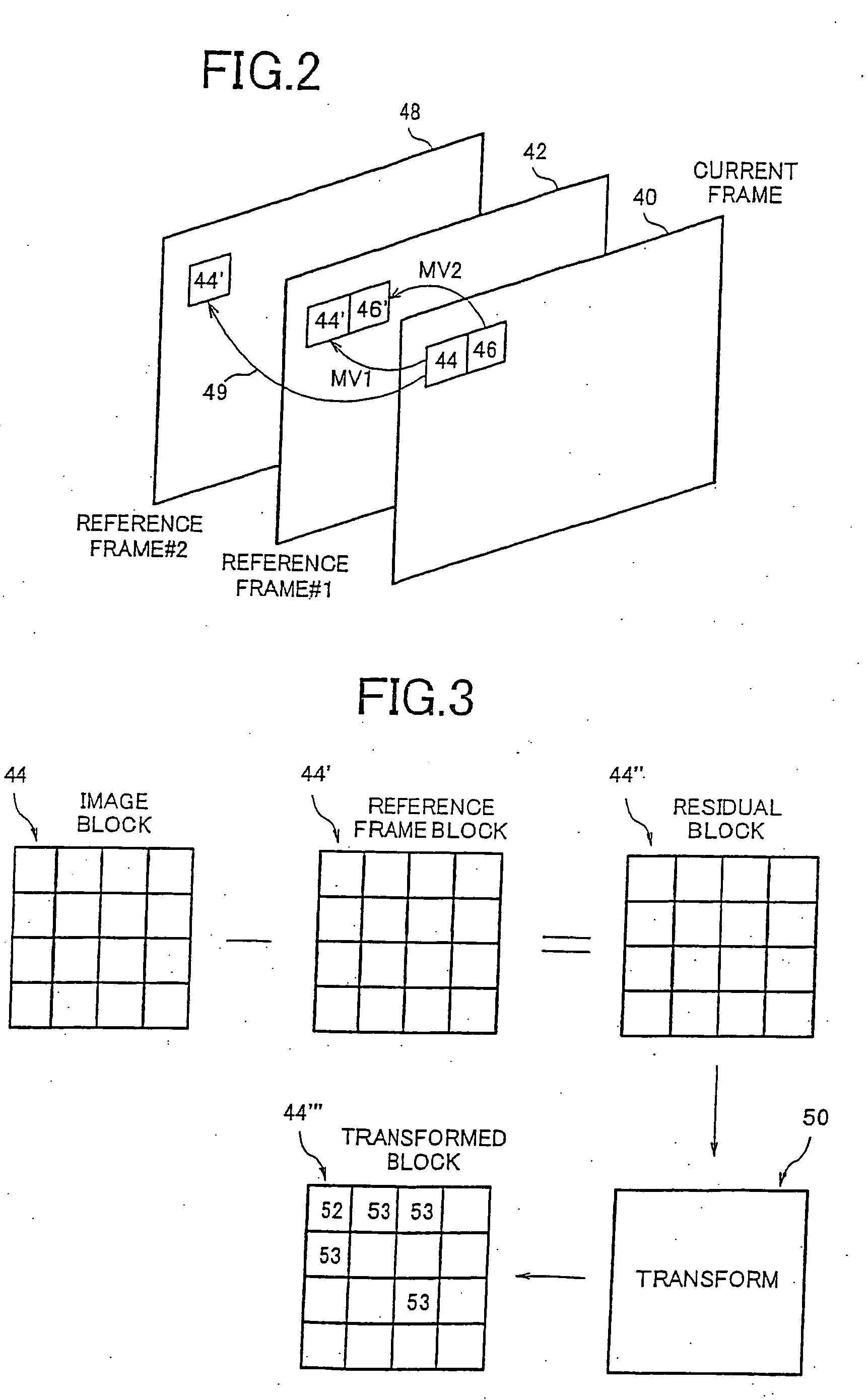Adaptive filtering based upon boundary strength
a filtering and boundary strength technology, applied in the field of adaptive filtering based upon boundary strength, can solve the problems of wasting processing resources and introducing blurred artifacts into the imag
- Summary
- Abstract
- Description
- Claims
- Application Information
AI Technical Summary
Benefits of technology
Problems solved by technology
Method used
Image
Examples
Embodiment Construction
[0017] Conventional filtering processes consider a single reconstructed image frame at a time. Block based video encoding techniques may use motion vectors to estimate the movement of blocks consisting of a plurality of pixels. The motion-vector information is available at both the encoder and decoder but is not used with conventional filtering processes. For example, if two adjacent blocks share the same motion vector with respect to the same reference image frame, (for a multiple reference frames system) there is likely no significant difference between the image residuals of each block and accordingly should not be filtered. In essence, adjacent portions of the image have the same motion with respect to the same reference frame and accordingly no significant difference between the image residuals would be expected. In many cases, the block boundary of these two adjacent blocks may have been filtered in the reference frame and should therefore not be filtered again for the current...
PUM
 Login to View More
Login to View More Abstract
Description
Claims
Application Information
 Login to View More
Login to View More - R&D
- Intellectual Property
- Life Sciences
- Materials
- Tech Scout
- Unparalleled Data Quality
- Higher Quality Content
- 60% Fewer Hallucinations
Browse by: Latest US Patents, China's latest patents, Technical Efficacy Thesaurus, Application Domain, Technology Topic, Popular Technical Reports.
© 2025 PatSnap. All rights reserved.Legal|Privacy policy|Modern Slavery Act Transparency Statement|Sitemap|About US| Contact US: help@patsnap.com



